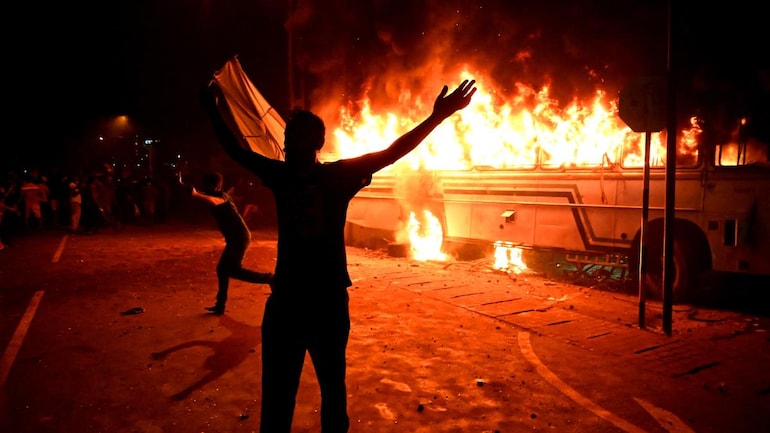When protesters staged a demonstration outside the home of Sri Lankan President Gotabaya Rajapaksa late Thursday, more than 40 people were arrested and one person was critically injured. Protesters also set fire to a bus parked outside the president’s residence in Colombo’s Mirihana neighborhood.
Hundreds of protesters remained near the president’s residence on Pengiriwatte Road, according to photos shared by the Sri Lankan news agency Daily Mirror. The majority of the protesters were seen holding placards in the photos. Some protesters even brought their kids with them. The protest has yet to be brought under control, according to the Daily Mirror.
According to Reuters, following the protests, Colombo police imposed an overnight curfew. Four police divisions in Colombo – Colombo North, South, Colombo Central, Nugegoda, Mount Lavinia, and Kelaniya – were under curfew, according to Amal Edirimanne, a senior police official. The curfew was lifted on Friday morning, according to local news outlets citing Colombo police spokesperson Nihal Thalduwa.
The demonstrations follow the government’s handling of the country’s crippling economic crisis, which has divided opinion among experts. Some blame the Chinese debt trap, but Sri Lankan commentators blame economic mismanagement and a reluctance to reform the Sri Lankan economy as the primary causes of the recent outpouring of rage against the Rajapaksa administration.
According to a report by the news agency Foreign Policy, Sri Lanka is hesitant to approach the International Monetary Fund (IMF) for fear of being forced to implement the UN agency’s economic reforms. The reluctance was a major factor in Sri Lanka’s decision to refinance its Chinese loans and seek assistance from India. According to Reuters, IMF spokesperson Gerry Rice said on Thursday that talks with Sri Lankan authorities about a possible loan program will begin in the coming days.
According to reports, Sri Lanka has been experiencing an economic crisis as a result of a 70% drop in foreign exchange reserves since January 2020, which has resulted in civil unrest on the island. While speaking to news agency Himal Southasian, Ahilan Kadirgamar, a senior lecturer at the University of Jaffna, said that the economy has been crisis-prone since ‘liberalisation in the late 1970s’ and linked the current crisis to the civil war that has ravaged Sri Lanka for more than two decades.
He claims that under the JR Jayawardena government’s rule in the late 1970s, when workers’ unions were attacked and tens of thousands of people were laid off, the economy was set on a neoliberal path, which paved the way for the current crisis.
